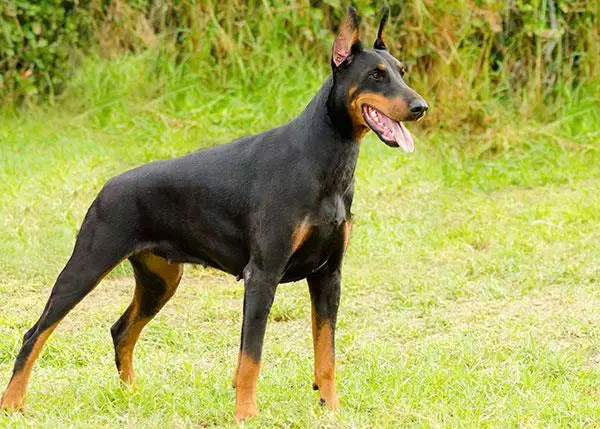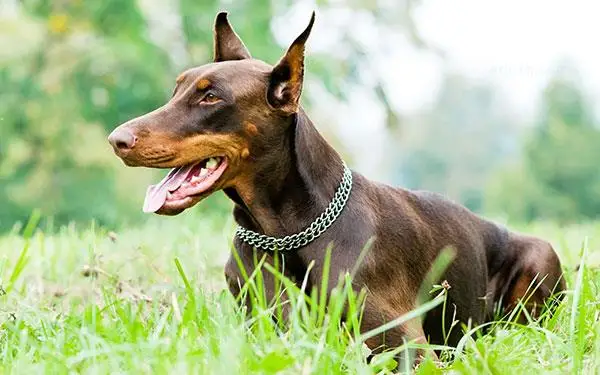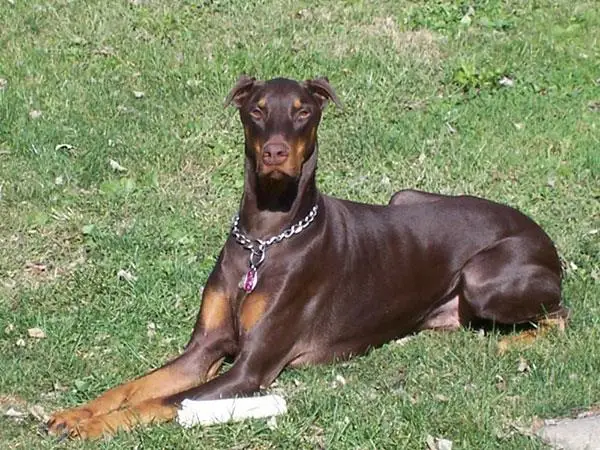Variety Overview
English Name: Doberman Pinscher
Alias: Doberman (also known as 笃宾犬)
Place of Origin: Germany
Intelligence Ranking: 5th
Size Category: Extra Large Dog
Shoulder Height: 66-71 cm (26-28 inches)
Weight Range: 30-40 kg (66-88 lbs)
Coat Type: Short Hair
Primary Roles: Companion Dog, Guard Dog, Working Dog
Development Origin
The Doberman is Germany’s only dog breed named after its original breeder, Mr. Dobermann. It’s said that Mr. Dobermann worked as a tax collector, horse butcher, and temporary caretaker for stray dogs. As part of his role as a caretaker for strays, he had legal rights to care for all stray dogs, which allowed him to raise exceptionally intelligent animals. During that period, what was known as the “butcher’s dog” was already considered a pure breed and played an essential role in developing the Doberman breed.
This early version of the German Rottweiler was crossbred with shepherd dogs from Thuringia at that time, resulting in black dogs with rust-red markings. In the 18th century, Mr. Dobermann used these breeds to create what we now know as the Doberman Pinscher: alert and highly protective dogs that excelled both as working and guard dogs.
Due to their extensive use in police work, these dogs earned the nickname “gendarme dog.” They were also frequently used in hunting to tackle large pests. Over time and with evolving circumstances, by the early 19th century, Dobermans officially gained recognition as police dogs.

Morphological Features and Identification
Medium in size with a square-shaped body, this breed has a compact and muscular build that gives it significant endurance and speed. It exudes an elegant appearance and a confident demeanor that highlight its noble temperament. The breed is lively, alert, determined, intelligent, brave, loyal, and obedient.
Male dogs typically stand between 26 to 28 inches at the shoulder, with an ideal height of 27.5 inches. Female dogs are slightly smaller, standing between 24 to 26 inches at the shoulder, with an ideal height of 25.5 inches. The shoulder height (measured from the highest point of the withers to the ground) matches the body length (measured horizontally from the front chest to the thigh). The proportions of the head, neck, and legs are balanced in relation to the body’s height and depth.

Feeding Guidelines
In the past, providing nutritious meals for pet dogs was much more complicated and time-consuming than it is today. Pet owners used to believe that a daily diet should include fresh beef, vegetables, grains, egg yolks, and milk along with additives like brewer’s yeast or other vitamins.
However, recent years have seen a shift in opinions regarding the necessity and benefits of this practice. While daily staples like egg yolks and milk are still given to dogs, the overall approach has changed significantly. Many experts endorse this new approach as well. Schools now teach that “providing mass-produced dog food is better than mixing your own dog food at home.”
The reasoning behind this new perspective is quite straightforward. Today’s dog food industry has grown significantly and includes contributions from well-known and respected dog enthusiasts who ensure high-quality products. When people trust these products to nourish their pets effectively—and see their dogs thriving—there’s little more one could ask for.
More than half of today’s top-quality dry dog foods can be served simply by mixing them with water or broth or adding some fresh or canned meat. Various canned meats offer either 100% pure meat or mixtures with other ingredients; some come as fully prepared meals including both meat and grains. There are also convenient bagged “fast foods” that just need to be poured into a dish—perfect for any time but especially handy when traveling. Generally speaking though, feeding dry food mixed with hot water along with some canned meat provides a balanced meal.
Leftover meats or ground beef can occasionally be added too; however, it’s recommended to use canned meats since they often contain added vitamins making them more nutritious than fresh meats alone. Alternating between different types of meats keeps your dog’s diet varied—something they enjoy—and canned options make it easy to provide this variety. Available canned meats include options like beef chunks, beef scraps, stewed beef, chicken, lamb, liver as well as various mixed meats.
